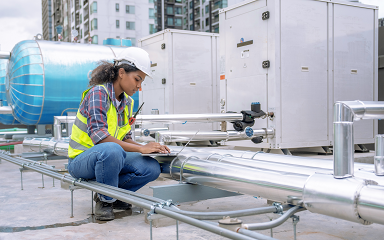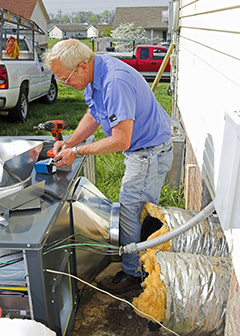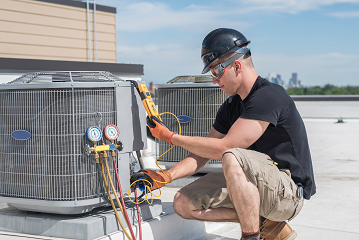Summary
Please enable javascript to play this video.
| Quick Facts: Heating, Air Conditioning, and Refrigeration Mechanics and Installers | |
|---|---|
|
$59,810 per year
$28.75 per hour |
|
| Postsecondary nondegree award | |
| None | |
| Long-term on-the-job training | |
| 425,200 | |
| 8% (Much faster than average) | |
| 34,500 | |
What Heating, Air Conditioning, and Refrigeration Mechanics and Installers Do
Heating, air conditioning, and refrigeration mechanics and installers work on heating, ventilation, cooling, and refrigeration systems.
Work Environment
These workers install and repair systems in homes, schools, hospitals, and other buildings. They may need to work in cramped spaces, outdoors, or in extreme temperatures. Most work full time, and schedules may vary.
How to Become a Heating, Air Conditioning, or Refrigeration Mechanic and Installer
Heating, air conditioning, and refrigeration mechanics and installers typically need a postsecondary nondegree award, although some enter the occupation with less education. Once hired, they typically have a lengthy period of on-the-job training to attain competency. These workers may need a license or certification.
Pay
The median annual wage for heating, air conditioning, and refrigeration mechanics and installers was $59,810 in May 2024.
Job Outlook
Employment of heating, air conditioning, and refrigeration mechanics and installers is projected to grow 8 percent from 2024 to 2034, much faster than the average for all occupations.
About 40,100 openings for heating, air conditioning, and refrigeration mechanics and installers are projected each year, on average, over the decade. Many of those openings are expected to result from the need to replace workers who transfer to different occupations or exit the labor force, such as to retire.
State & Area Data
Explore resources for employment and wages by state and area for heating, air conditioning, and refrigeration mechanics and installers.
Similar Occupations
Compare the job duties, education, job growth, and pay of heating, air conditioning, and refrigeration mechanics and installers with similar occupations.
More Information, Including Links to O*NET
Learn more about heating, air conditioning, and refrigeration mechanics and installers by visiting additional resources, including O*NET, a source on key characteristics of workers and occupations.
 United States Department of Labor
United States Department of Labor










